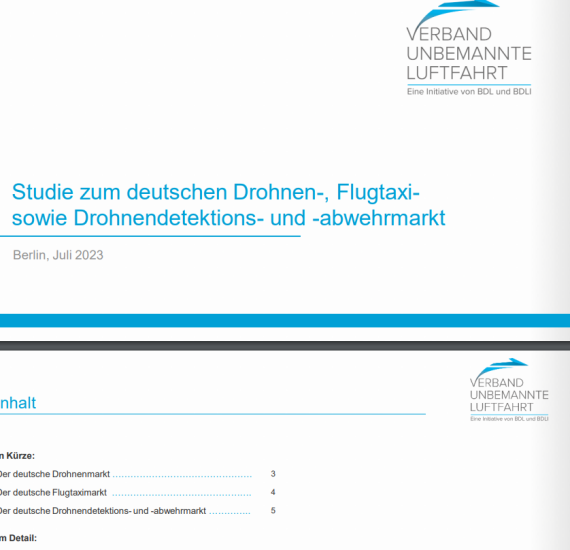Germany’s Association of Unmanned Aviation (VUL) has released the results of its bi-annual market study into current trends and developments in the drone, air taxi and drone detection and defense markets. The study is based on real market data.
Key drone detection and defence findings:
The growth of the drone detection and countermeasures market is correlated with the proliferation of drones in personal and commercial use, fueling the demand for protection against potentially dangerous aircraft. In 2022, 13% of the 215 million euros invested worldwide flowed into German companies.
Key commercial drone market findings:
There are well over 400,000 drones in circulation in Germany. Most of it, 359,000 drones, is used privately. However, this proportion has been declining for several years. However, the market for private drones seems to be saturated, while the commercial use of drones is becoming increasingly popular: the proportion of commercially used drones has increased by 197 percent since 2019 to 56,400 drones now.
The growth in the area of commercial use is also due to the high investments in drone companies: In the past ten years, around 124 million euros have been invested in these companies, 93 percent of this sum the drone companies received in the past two years alone. On average, these companies in Germany are eight years old and employ around 20 people.
The German drone market is currently 955 million euros. The commercial drone market accounts for 893 million euros and the private drone market for 62 million euros. In the ranking of the largest commercial drone markets, Germany continues to rank fourth after China, the USA and Japan. However, this is put into perspective if one does not take the absolute size of the market as a basis, but the size of the market per employee: Norway and Switzerland are then at the top in a global comparison – Germany comes in 18th place.
The number of drones in Germany will be around the same level in 2030 at around 412,000. While growth in personal use will continue to level off, the number of commercially used drones will increase to 80,000. Only one in seven drones is currently operated commercially in Germany; by 2030 it will be one in five drones. The German drone market will almost double by 2030 from EUR 955 million to over EUR 1.7 billion, which corresponds to an average annual growth rate of 7.5 percent. The growth is mainly driven by the commercial market.
Around 3,100 people in Germany work primarily with air taxis. The companies are six years old on average and employ around 160 people. The German air taxi market is currently 16.6 million euros and will grow to 167 million euros in 2030. This corresponds to an annual growth rate of over 30 percent. At the moment there are no air taxis flying, as all devices are in the design, prototype or certification phase. However, that could change as early as next year: the first commercial flights are expected to start in 2024, and around 300 air taxis are expected to be in operation in German airspace by 2030. 262 air taxis will be used for passenger transport and 67 for freight transport.
The Association of Unmanned Aviation (VUL) is a joint initiative of the Federal Association of the German Aviation Industry (BDL) and the Federal Association of the German Aerospace Industry (BDLI).
View the study here
For more information visit:
www.verband-unbemannte-luftfahrt.de




